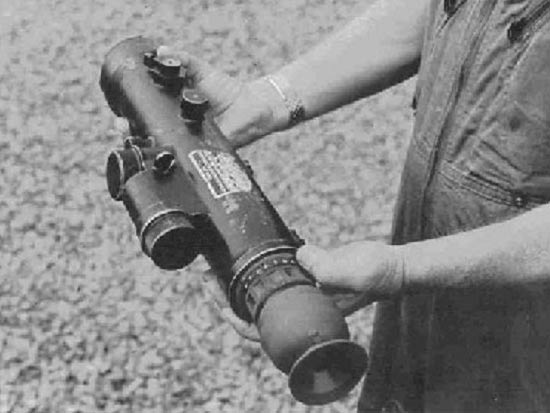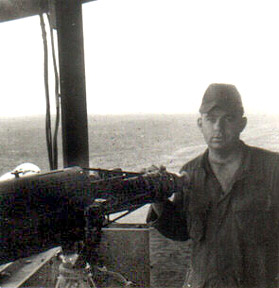Here's the info on Night Vision or NOD (Night Observation Device) in SEA.
By the mid-1960's, scientists and engineers at Night Vision fielded the first generation of passive night vision devices for U.S. troops, including a Small Starlight Scope that served as a rifle-mounted sight or as a handheld viewer. Realizing these systems were far from perfected, Night Vision research personnel came to refer to the development of this early equipment as the First Generation Image Intensifier Program. Scientists and engineers would go on to improve upon this technology to deliver a second and third generation of night vision equipment.

The first generation Small Starlight Scope was soon put to practical use in the field. With the United States' growing involvement in Vietnam, U.S. soldiers quickly recognized that they faced an enemy that relied on the cover of darkness to conduct its maneuvers and offensive operations. In 1964, the U.S. Army issued night vision equipment to the troops in Vietnam. The Vietnam War proved to be an important stage in the development of night vision systems.
There were no "goggles" like today and instead Gen I scopes were mounted on rifles as in the following images.

AN/PVS-2 Night Vision Sight “Starlight Scope” (1st Generation) used on M14 Rifle (circa 1967-75)
Type: Passive “starlight” scope intensifying ambient light
Weight: 6 pounds complete with battery
Effective range: same as with conventional sights
This is a bigger picture of a soldier in country showing the scale of a Gen I scope. The Gen I scopes were in wide usage by 1969.
http://bp1.blogger.com/_IQgkr1tu7Pk/R0i ... /130+j.jpg
In late 1969 the US started the Nighthawk project which utilised some estimated 14 the UH-1H huey force to conduct night missions armed with a Starlight scope, a large Xenon searchlight and a mounted minigun. Some models also had a mounted .50 poking out the door.

The empty slot for the NOD can be seen above the Xenon searchlight.

The NOD is clearly visible here. Note that the minigun is mounted away from the door gunner position.
A better picture of the whole Nighthawk system can be seen on this Firefly squardron bird.
http://www.vhpamuseum.org/aircraft/images/firefly.jpg

A better indidcation of the scale of the NOD. This one seems to be mounted on a watchtower.
The following are pictures of the large mounted NOD optics. Sorry but I couldn't find any of the rifle mounted optics.


If there's anything else you'd like me to find out just ask.